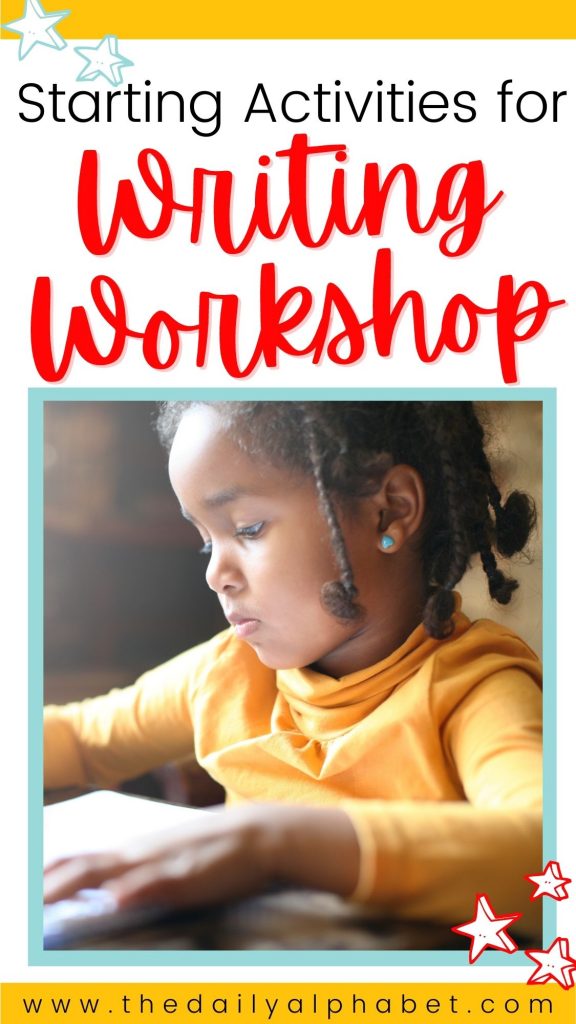
When it comes to a daily writing workshop, there are generally 3 parts. First up we have what I call the starter, then the writing part and lastly, we have the sharing part. Today we’re going to chat about how to begin a writing workshop.
Over the years a lot of things I’ve seen and read talk about the mini-lesson, but it wasn’t until I did more and more mini-lessons that I realized that they didn’t have all look the same. I don’t need to talk for the first 8 minutes and then move them into their writing time.
I’ve kind of honed 5 approaches to beginning the writing time for each day. There are two ways to check it out! You can read on or press play!
1. Start with a Lesson
Soooooooo……..this is the mini-lesson. HAHAHA!!
When you first begin your daily workshop, many of those days will be with mini-lessons, focusing on routines and procedures, such as writing folders and how to get materials such as writing paper and pencils, etc. This eventually gives way to teaching things such as drawing as a form of pre-writing, spacing between words, etc.
2. Start with Modeled Writing
With Modeled writing, you will compose a piece in front of your class, which will show them print to text conventions as well as writing skills. During this time you can think aloud, talking with your students about things that you are thinking about.
For instance, I model text wrapping several times. Sometimes we can overuse simple sentences, never having that sentence go to the next line. I often get to the end of the line without completing what I was writing about. A mini-lesson can be that simple and doesn’t have to be drawn out to be effective.
3. Start with a Book
You can also begin your workshop with a book, otherwise known as a mentor text. With this approach, you are helping your students to learn writing skills by exploring published writing. You can use Big Books to demonstrate printed text concepts, narrative style books written in the first person to show students how authors can describe what is happening.
More often than not, I like to begin by taking a peek at a book I’ve already read before. This means that I can be free to zero in on what I want to bring to the forefront, such as how the author describes everything in the scene.
4. Start with Shared Writing
Another great way to begin your writing time is with shared writing. This is perfect after you have been writing for a while, and students have some kind of experience with writing time. With this, you would compose a piece in front of the class, and your students will help to contribute words and sentences.
During this time I like to write about a shared experience, such as a field trip, what we had for lunch that day, etc. During this time I reinforce left-to-right movement, text wrapping, and writing conventions.
5. Start with an Activity
I can also move naturally into my writing time by continuing from something we are already doing. For instance, if we are doing a unit of study on penguins, we might read a book about penguins, get ready to do our penguin craft, and then we go directly to writing about penguins. When I do it this way, they don’t even notice that’s what we’re doing, they’re so excited to continue with the unit!
These are my favorite ways to begin writing workshop each and every day. It helps to break things up and gets students excited about writing. This is one of my proudest accomplishments for writer’s workshop. If you’d like to know more about the mistakes I’ve made, you can read on here.












